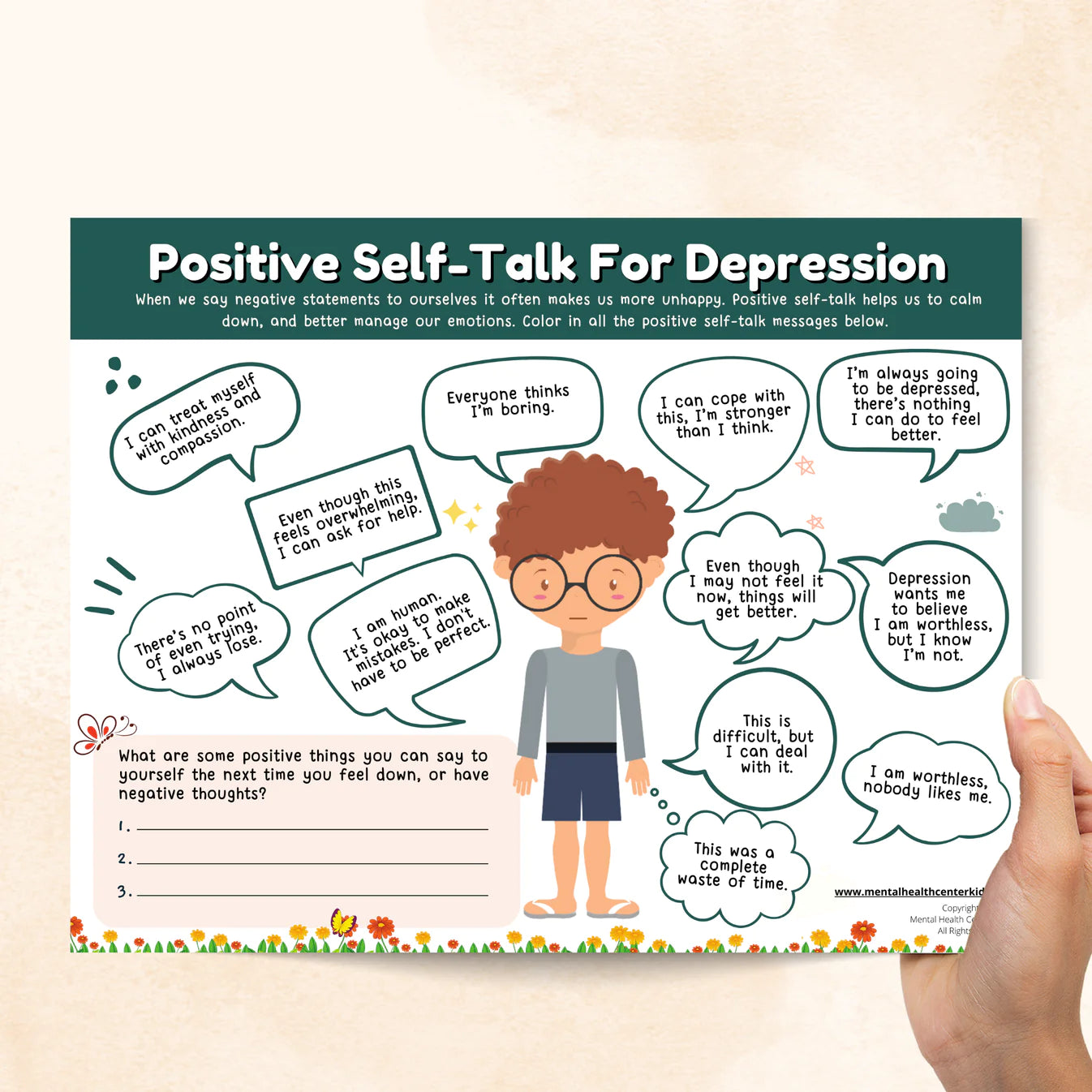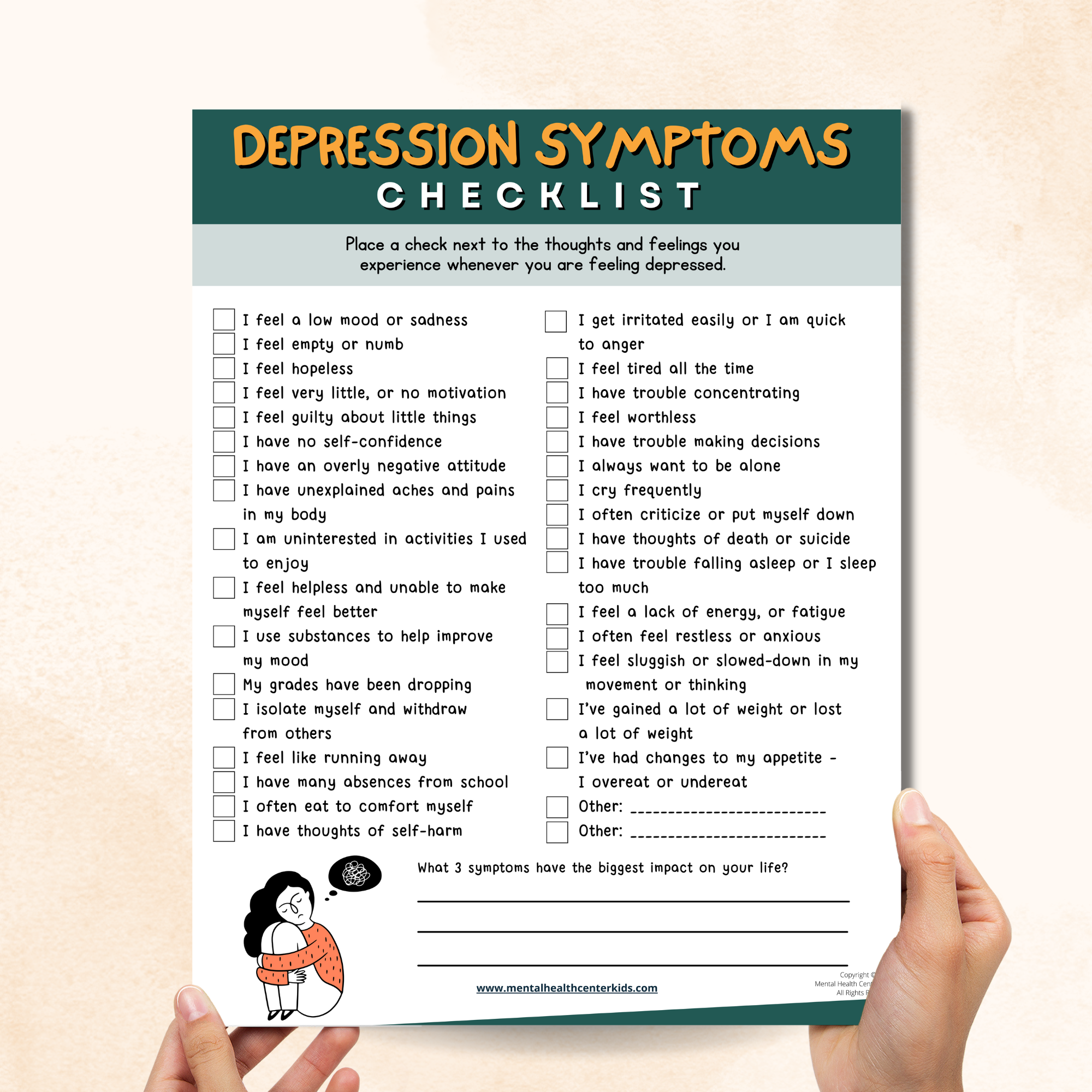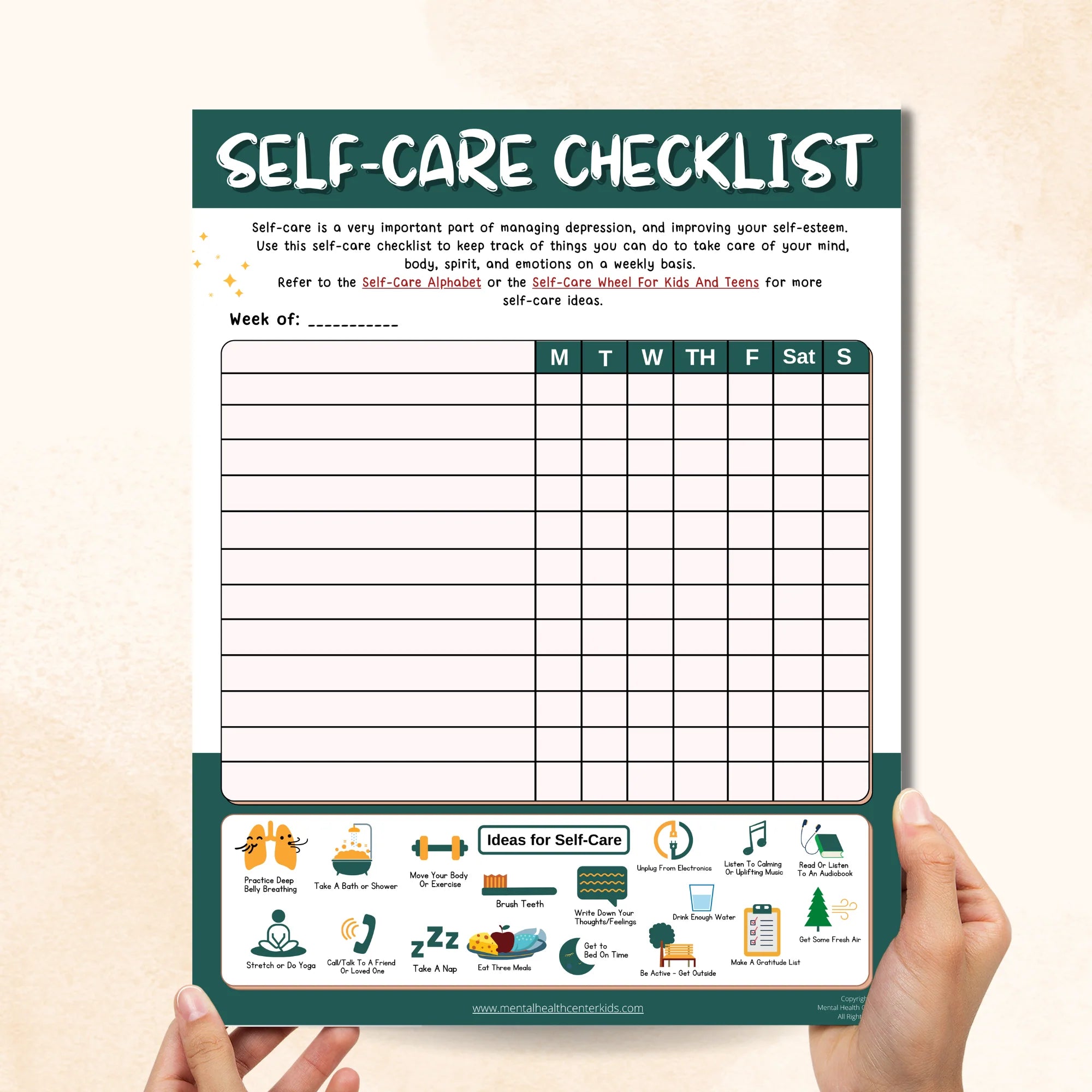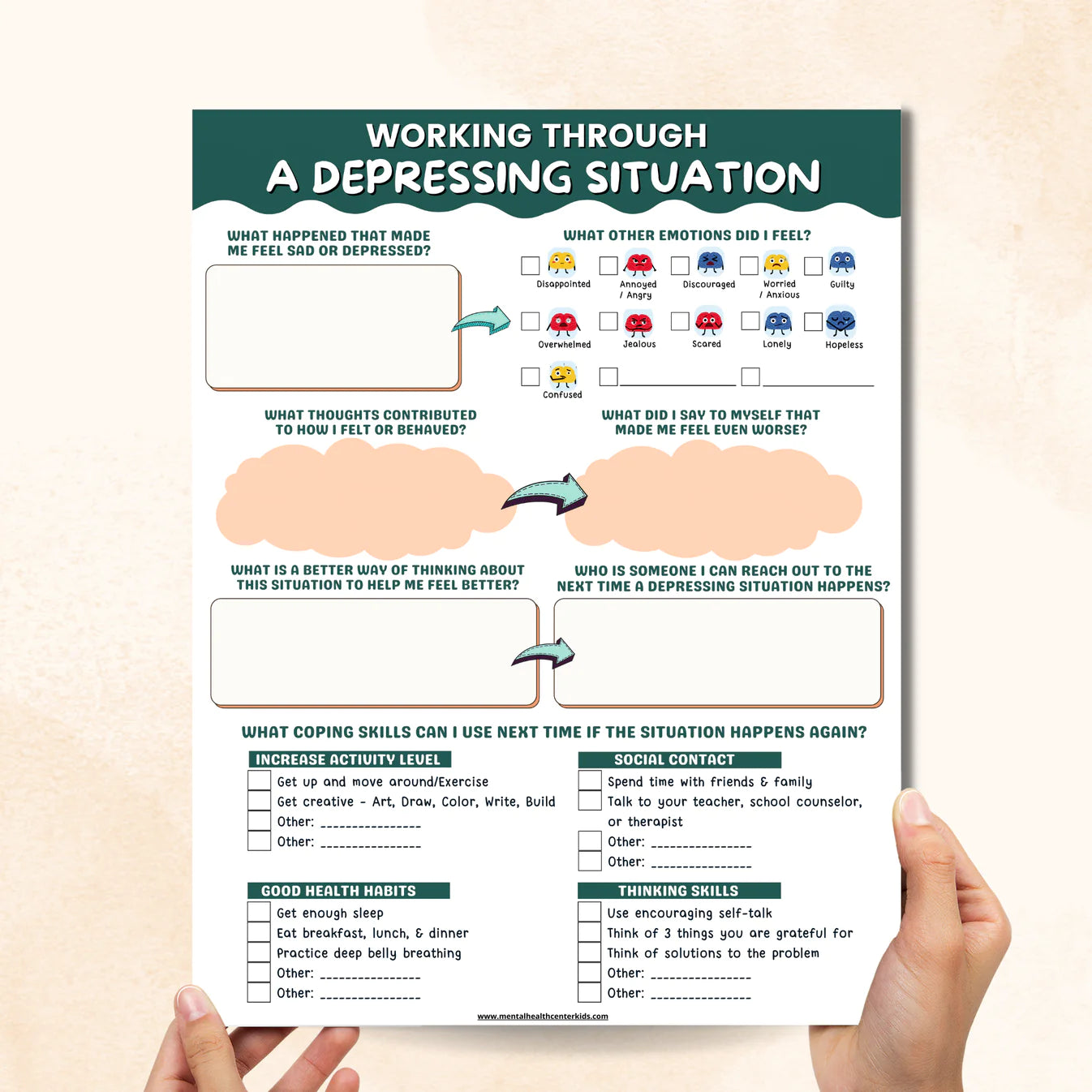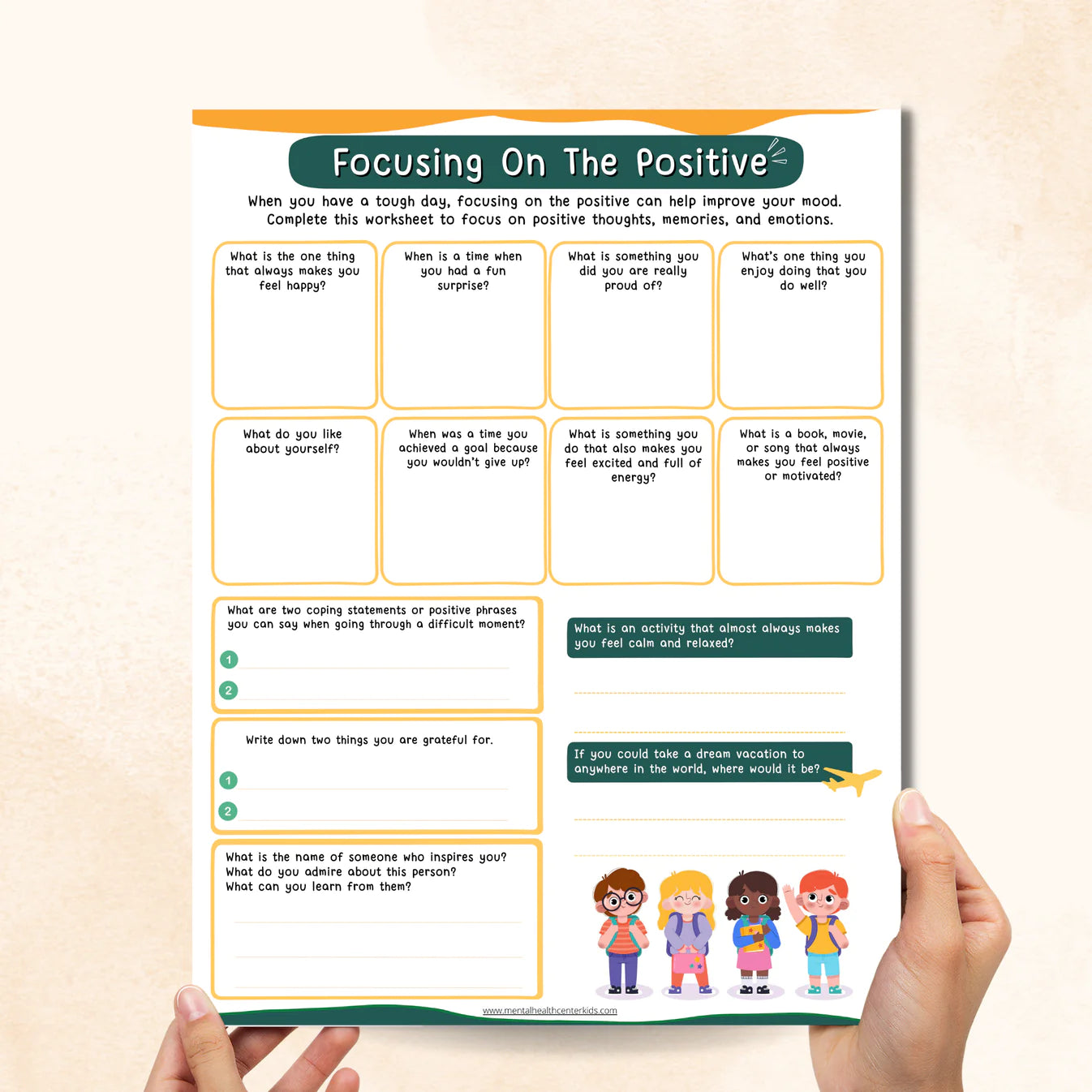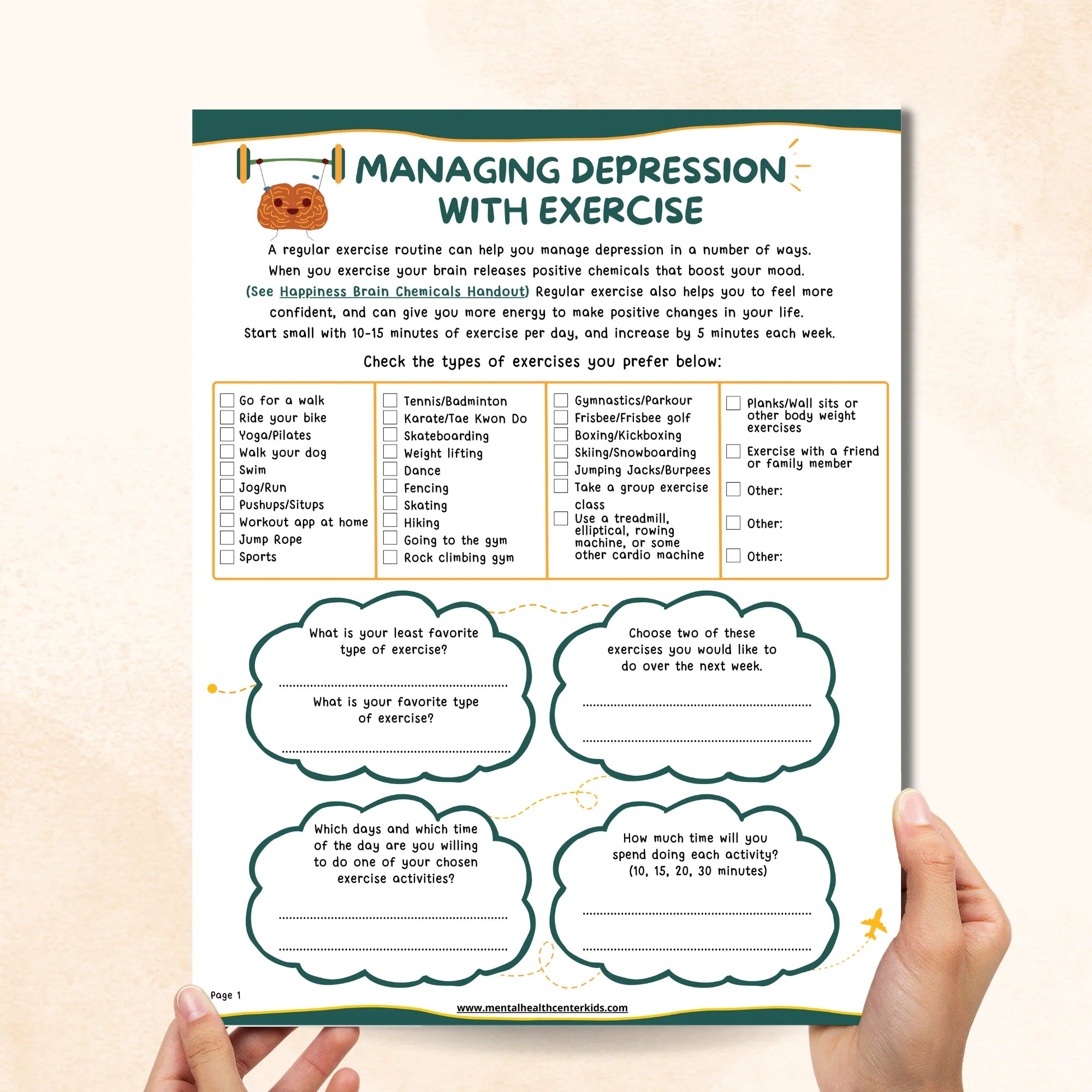|
Key Takeaways:
- Depression worksheets for teens aim to equip children with the appropriate coping mechanisms for challenging situations.
- Depression worksheets help teenagers improve their mood, enhance their physical health, and learn to deal with stressful situations.
- Some depression worksheets include symptom trackers, positive self-talk, and coping checklists.
|
Feeling helpless, extremely sad, or depressed is typical among teenagers. However, these overwhelming feelings can quickly become debilitating and negatively impact daily life.
By using depression worksheets for teens alongside more aggressive treatments like CBT or DBT, you can help your teenager develop healthier coping mechanisms.
What are Depression Worksheets for Teens?
Depression worksheets for teens aim to help adolescents identify and manage depressive symptoms. These worksheets help facilitate exercises like restructuring negative thoughts, identifying harmful coping habits, and understanding the relationship between thoughts, emotions, and behaviors.
Because depression in teens is becoming increasingly common, finding ways to manage it at home and in school is imperative. Depression can last for a long time, so developing healthy coping skills early on is essential to a teenager’s future success.
What are the Benefits of Using Depression Worksheets for Teens?
Depression worksheets for adolescents are a powerful tool for teenagers struggling with their emotions. They aim to equip teenagers with the best coping skills for depression. Incorporating them into your child’s treatment plan can provide the following benefits:
-
Improves mood. Depression worksheets aim to improve a teenager’s overall mood and well-being. By using them to challenge negative thoughts, teenagers can develop more positive mindsets.
-
Increases resilience. By understanding their triggers and reactions, teenagers can become better problem-solvers, thus increasing their resilience in the face of adversity.
-
Enhances self-confidence. When teenagers know how to manage their depressive symptoms, they can become more self-compassionate. In addition, teenagers who cope best through exercise can develop a healthier body image [*].
-
Sharper memory and thinking. Improving depressive symptoms can boost mental clarity and even reduce cognitive decline in the future.
10 Printable Depression Worksheets for Teens
Is your child struggling with depressive symptoms? Here are ten printable depression worksheets for teens you can try at home or with a professional.
1. Mood Tracker Worksheet
Using a mood tracker worksheet can help identify internal and external triggers and learn how factors like sleep, diet, and physical activity affect their emotions and behavior. Mood trackers also help teenagers spot patterns and determine what habits help improve their overall disposition.
Our mood tracker helps teenagers track their symptoms and manage their responses to specific stressors or events.
2. Positive Self-Talk for Depression
Part of overcoming depression is practicing positive self-talk. Positive self-talk for depression entails overcoming negative thoughts and reducing feelings of helplessness by telling oneself, “I have the skills to do better next time,” or “I can overcome this, no matter how difficult it is.”
Approaching negative situations with a positive mindset can improve teenagers' conflict-resolution skills, as it keeps them motivated.
3. Depression Symptoms Checklist
Like a mood tracker, a depression symptoms checklist helps teenagers identify behaviors and habits that occur when they are depressed. For instance, your teenager might notice that they experience decision paralysis, have lower grades, lack energy, or cry frequently.
With our depression symptoms checklist, have your teenager identify the symptoms that affect them the most and focus on how to eliminate them.
4. Bodily Symptoms of Depression
Teenagers may not be aware that depression can manifest physically. Bodily symptoms of depression might include increased fatigue, migraines, back pain, and digestive problems [*]. By identifying these symptoms, teenagers can better differentiate between physical illnesses and bodily troubles caused by mental despair.
5. Understanding the Causes of Depression
Depression always originates from somewhere, whether it’s genetic or environmental. Understanding the causes of depression can help teenagers better manage related symptoms.
Our worksheet encourages teenagers to reflect on what life events may trigger their depression and how these affect their thoughts and behaviors. It also enables them to explore the biological reasons behind depression.
6. Depression Self-Care Checklist
Once your child has a better understanding of depression and what it entails, it’s time to move on to actionable steps. A depression self-care checklist can help teenagers craft a curated strategy for helping themselves out of a depressive spell.
Self-care checklists are excellent in individual therapy settings or group discussions wherein peers can share tactics that have worked for them and suggest activities that may help others.
7. Working Through a Depressing Situation
While learning to identify depressive symptoms is essential to developing an effective self-care routine, working through a depressing situation can be challenging for hormonal teenagers. Between 13 and 18, structure plays an essential role in a teenager’s development and skills-building phase. By learning how to tackle a depressing situation, teenagers can apply their skills to challenging circumstances in academic and professional settings.
8. Focusing on the Positive Worksheet
Focusing on the positive doesn’t mean denying the negative. Instead, it encourages teenagers to acknowledge a difficult situation without allowing it to overcome them. Amidst challenging circumstances, thinking about what makes them happy, what they like about themselves, and what they are proud of can motivate teenagers to work harder toward achieving a calm and relaxed state.
9. Managing Depression with Exercise
Beyond keeping our bodies healthy, physical activity can decrease stress and improve mental well-being [*]. During exercise, the body releases endorphins, natural brain chemicals that improve mood.
Regular exercise can also increase confidence, provide opportunities for social interactions in the gym or park, and allow teenagers to cope healthily.
When managing depression with exercise, our worksheet helps teenagers reflect on what type of physical activity works best for them. They can schedule exercise days and track how these activities helped improve their mood (or didn’t).
10. Depression Coping Skills Tracker
No two teenagers manage depression in the same way. What works for one may not work for another. With a depression coping skills tracker, your teenager can increase self-awareness and consider what activities are most effective for their mood.
Help Teens Combat Depression with These Helpful Worksheets
As the depression epidemic becomes increasingly concerning in teenage populations, finding ways to combat depression at home, at school, and in a professional setting is essential.
Whether your child is feeling down or struggles with a mood disorder, our depression worksheets can help equip them to become more resilient.
Sources:
- Ming-Yu Claudia Wong, Chung PK, Leung KM. “Examining the Exercise and Self-Esteem Model Revised with Self-Compassion among Hong Kong Secondary School Students Using Structural Equation Modeling.” International Journal of Environmental Research and Public Health, 2021.
- Jaracz J, Karolina Gattner, Jaracz K, Górna K. “Unexplained Painful Physical Symptoms in Patients with Major Depressive Disorder: Prevalence, Pathophysiology and Management.” CNS Drugs, 2016.
- Cooney GM, Dwan K, Greig CA, et al. “Exercise for depression.” The Cochrane Library, 2013.




